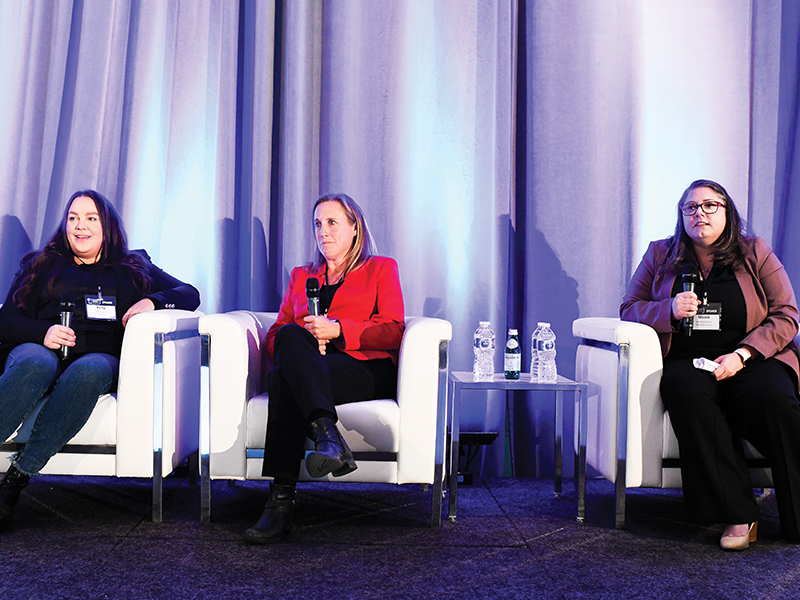
While short- and long-term disability leaves can be challenging and disruptive for both employees and employers, reviewing trends data can help plan sponsors begin to better support workers who are struggling.
Ontario Power Generation uses data on disability claims drivers, employee assistance program usage and leave durations to influence its programs, said Tanya Hickey (centre), the company’s senior manager of health and safety strategies, during a panel session at Benefits Canada‘s 2022 Healthy Outcomes Conference. The organization also dives into demographic data to learn whether specific areas of the business are experiencing higher incidences of certain illnesses, which might indicate environmental or other factors that need addressing.
Mental health is the organization’s No. 1 driver for STD and LTD leaves, she said, noting her team has found higher users of EAP have lower rates of disability leave while lower users of EAP are more likely to take leave, which has helped them target supports towards the right people. OPG recently renamed its disability management program to ‘absence services,’ both in recognition of disability to create a more inclusive environment and reducing stigma.
Read: How OPG is leveraging virtual care to improve health access
These efforts seem to be working, said Hickey. Comparing its mental health-related numbers to other organizations in its industry and its benefits provider’s book of business, OPG’s incidence rates were higher than others, but its leave durations were considerably lower. “We’re reducing stigma, people are feeling more comfortable to come forward to talk about it or go off on the leave they need to get treatment earlier on and then have a shorter duration absence.”
In direct response to disability data, Shopify Inc. rolled out its wellness strategy in January 2020, said Kelly Dawson (left), global lead of wellness and leaves, noting her team uses data from all its programs to influence how it communicates with the workforce — and even with specific employee groups — and reviews trends throughout the year. The team also regularly reviews incidence rates across employee groups and regions, the length of disability leaves and usage rates from its vendors.
CAA Club Group takes a deep dive on disability and EAP claims data, said Nicole Horbatiuk (right), the company’s director of human resources and benefits. During the pandemic, EAP usage related to personal relationship challenges spiked.
Outside of disability data, it’s been crucial for the company to understand the business realities of its departments, which include a travel company, retail division and an insurance business, each of which were impacted by the pandemic differently, she said. “If we’d [taken a uniform approach to] our wellness programs, it wouldn’t have worked. We really had to curate our wellness program to the department and based on their needs.”
Read: Role of data integration in disability management post-pandemic
Indeed, company-specific factors can influence benchmarking, added Dawson, noting Shopify’s benefits provider informed her the company’s incidence rates were higher than other organizations. However, she said, it was experiencing different factors than other businesses, including a three-year period of significant and sustained growth and running a large call centre. “We should know our organization and take the benchmarking with a grain of salt. If you’re seeing improvements in the data, that’s a win.”
Drug plan usage data can also be helpful, said Hickey, noting one in five OPG employees have a prescription for mental health-related medications. “That is a huge indicator of not just the population that is off of work, but our entire population that could be struggling silently but are still at work. This could contribute to presenteeism and other issues we see in the workplace.”
Read more coverage of the 2022 Healthy Outcomes Conference.
